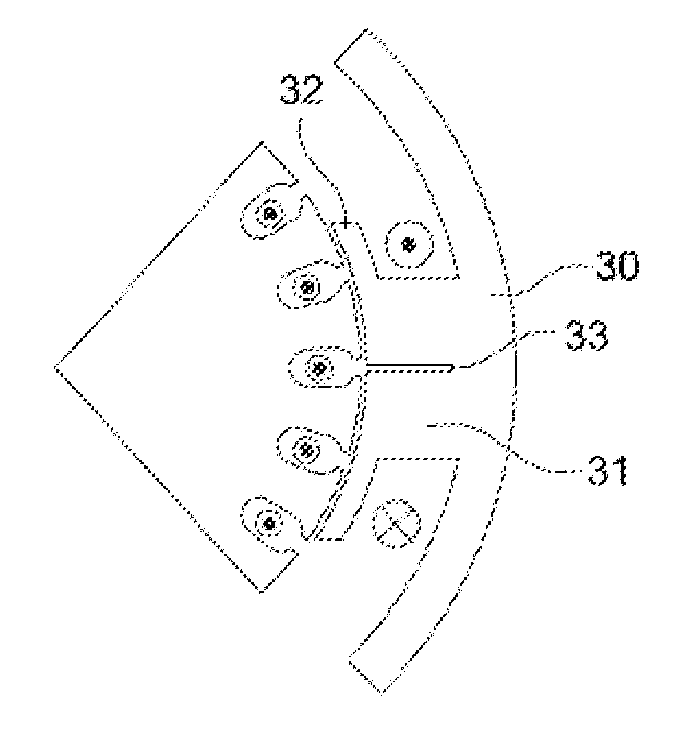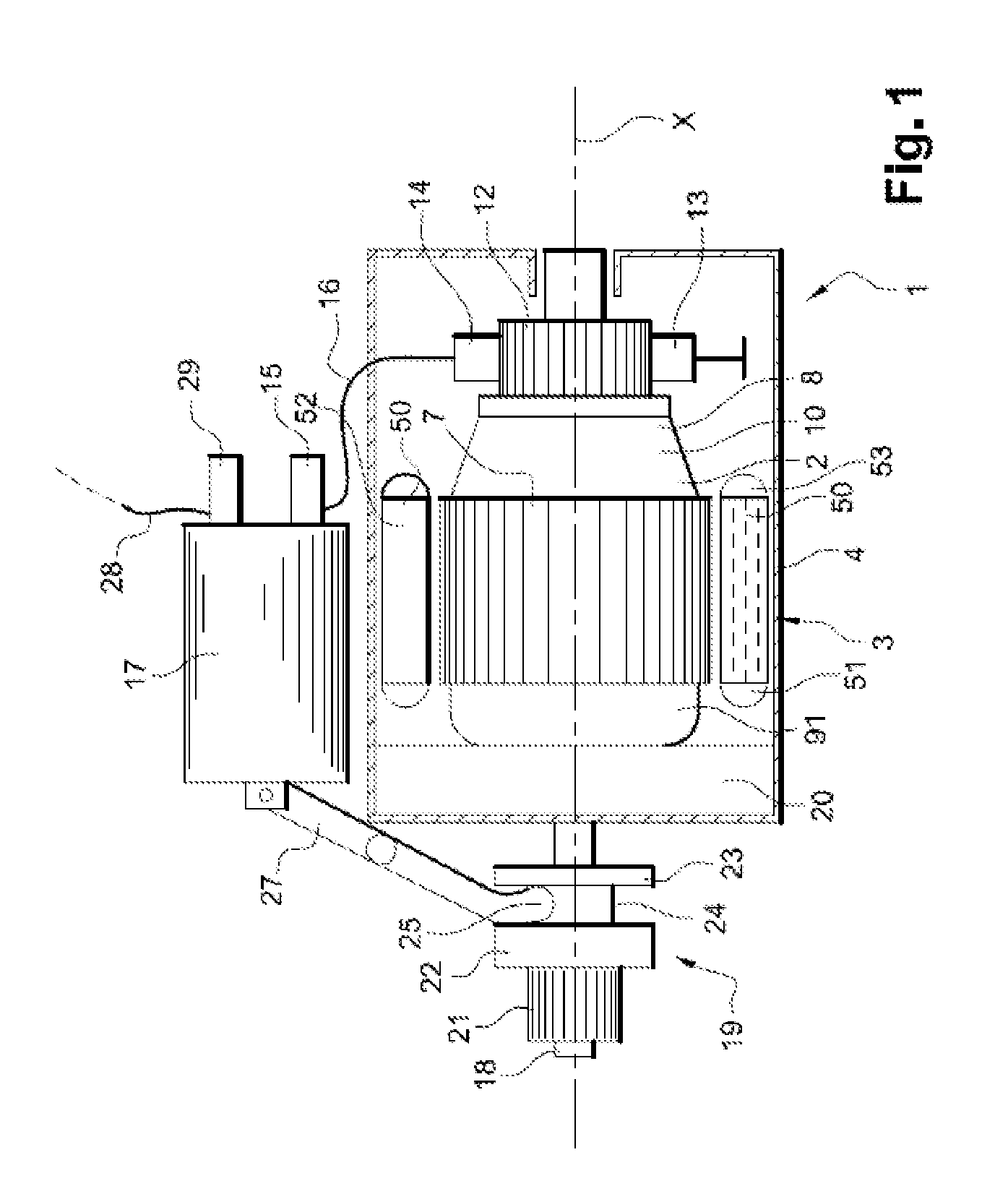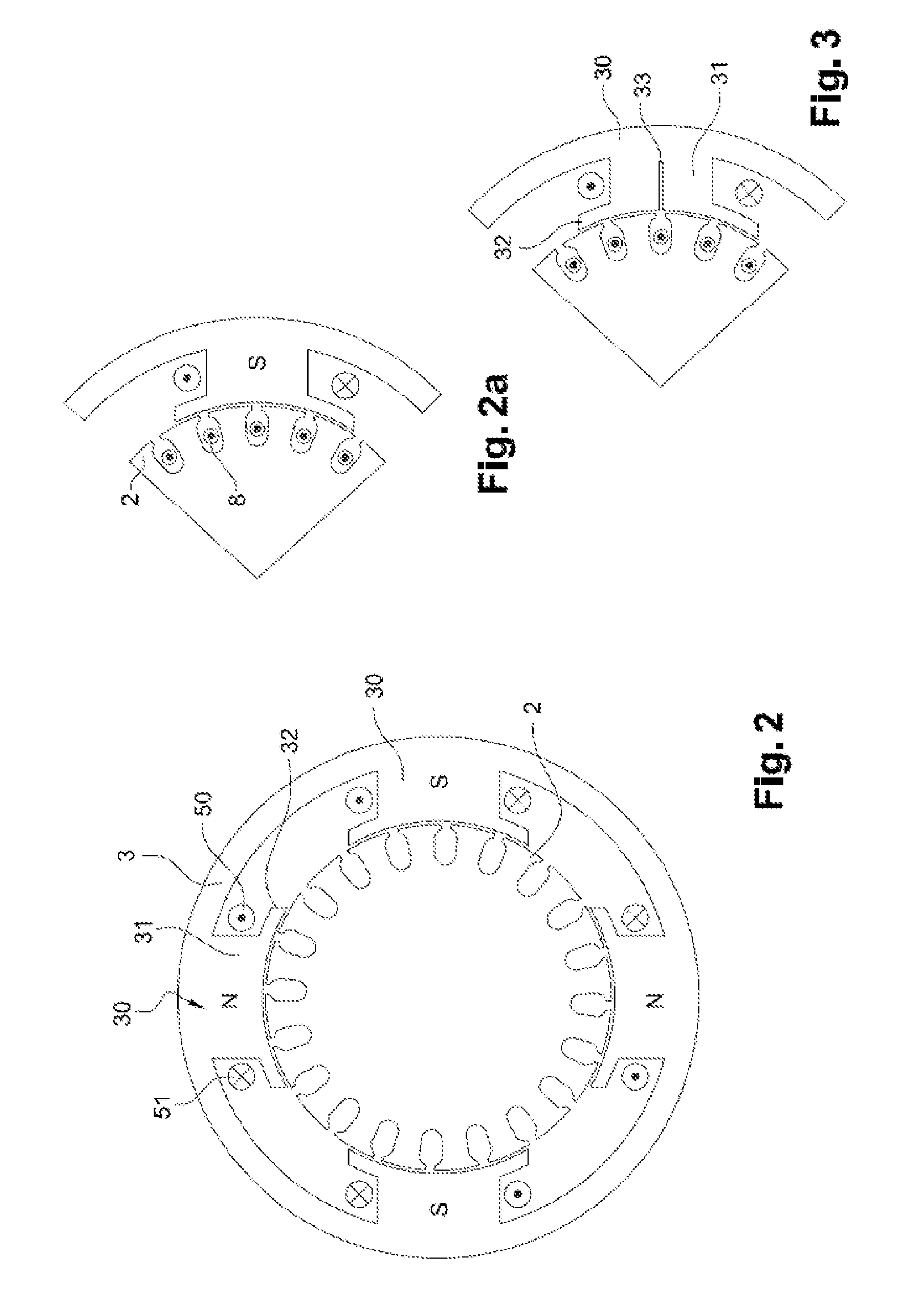Electric rotating machine with salient poles
a technology of electric rotating machines and salient poles, which is applied in the direction of dynamo-electric machines, electrical apparatus, magnetic circuits, etc., can solve the problems of degrading the switching condition, increasing the loss of iron, and reducing the performance, so as to reduce the quantity of copper used or permanent magnets, the effect of improving the counteracting effect of armature reaction
- Summary
- Abstract
- Description
- Claims
- Application Information
AI Technical Summary
Benefits of technology
Problems solved by technology
Method used
Image
Examples
first embodiment
[0053]FIG. 3 illustrates a first embodiment, wherein salient pole 30 comprises a slot 33 located in the middle of polar core 30, but this slot 33 can also be offset from the centre of salient pole 30, for example by quarter of the width of the polar core.
second embodiment
[0054]FIG. 4 shows a second embodiment, wherein slot 33 is filled by a magnet 330. Magnet 330 is disposed so that its magnetization 331 is transverse to the inductive flux, therefore parallel to the armature flux, but in the opposite direction so as to produce a compensatory effect. Thus, the difference in permeability, the anisotropy and polarization counteract the armature reaction effects, and in particular the saturation which they cause.
third embodiment
[0055]FIG. 5a shows a third embodiment comprising a stator 3 with two not-wound poles constituting consecutive poles 40 enclosed by two wound salient poles 30, it being possible to have only one consecutive pole 40 on rotor 3. If there are several consecutive poles 30 these preferably all have the same electrical polarity; on FIG. 5a all the consecutive poles are north poles. Consecutive poles 40 are equipped with slots 41. These slots 41 can be relatively deep relative to consecutive pole 40 and can almost reach down to the edge of polar core 31. These slots 41 render consecutive pole 40 anisotropic and therefore counteract the armature reaction effects, the saturation of which they can cause in addition.
[0056]FIG. 5b illustrates an alternative to the previous embodiment, wherein slots 41 of consecutive poles 40 are closed by slot wedges 42.
[0057]FIG. 6 illustrates a salient pole 30 with a polar core 31 comprising several slots 33.
[0058]Salient pole 30 on FIG. 7 comprises several s...
PUM
 Login to View More
Login to View More Abstract
Description
Claims
Application Information
 Login to View More
Login to View More - R&D
- Intellectual Property
- Life Sciences
- Materials
- Tech Scout
- Unparalleled Data Quality
- Higher Quality Content
- 60% Fewer Hallucinations
Browse by: Latest US Patents, China's latest patents, Technical Efficacy Thesaurus, Application Domain, Technology Topic, Popular Technical Reports.
© 2025 PatSnap. All rights reserved.Legal|Privacy policy|Modern Slavery Act Transparency Statement|Sitemap|About US| Contact US: help@patsnap.com



